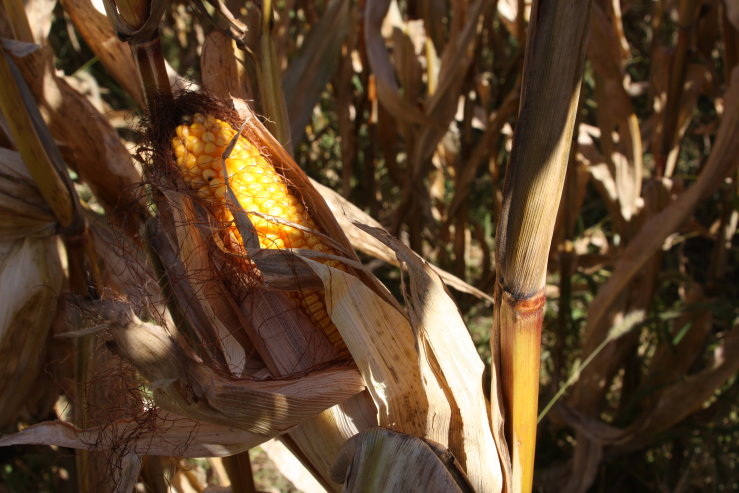
Agricultural News
Monitor Corn Fields for Stalk Quality Problems, DuPont Agronomists Say
Wed, 25 Sep 2013 10:50:15 CDT

DuPont Pioneer agronomists caution that many different stresses to the corn plant throughout the growing season can contribute to lower stalk quality at harvest time. Cool spring weather patterns, drought stress, reduced sunlight, insect and disease pressure and hail damage have each taken a toll on plant health this year.
With the wet, cool spring plants may have developed shallower root systems. This likely caused a reduction in nutrient uptake due to lack of root development. Cooler temperatures early on in the season also caused reduced plant lignin necessary for stalk strength.
The growing environment has a critical effect on the ability of the plant to provide sufficient photosynthate to the developing ear. With many cloudy days during the growing season, solar radiation and photosynthesis were reduced causing a reduction of sugars to meet the plant's demand. If photosynthesis is unable to supply the demands of the developing kernels, the plant redirects root and stalk carbohydrates to the ear. Prolonged cloudy conditions during ear fill often result in severely depleted stalk reserves and stalk rot organisms can invade weakened and dying plant tissues.
Drought stress was another issue growers saw this summer. Water relations within the plant and CO2 and oxygen exchange were directly affected. In addition, if leaf rolling occured during drought, the effective leaf surface for collection of sunlight is reduced.
Growers should monitor their fields as harvest approaches, to identify stalk quality problems and prepare to harvest before field losses can occur. Weak stalks can be detected by pinching the stalk at the first or second elongated internode above the ground. If the stalk collapses, advanced stages of stalk rot are indicated.
WebReadyTM Powered by WireReady® NSI
Top Agricultural News
More Headlines...



















